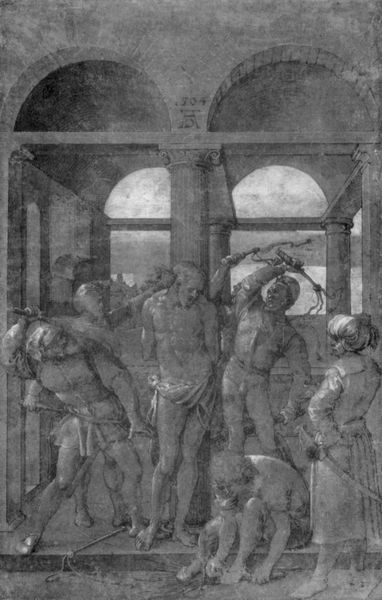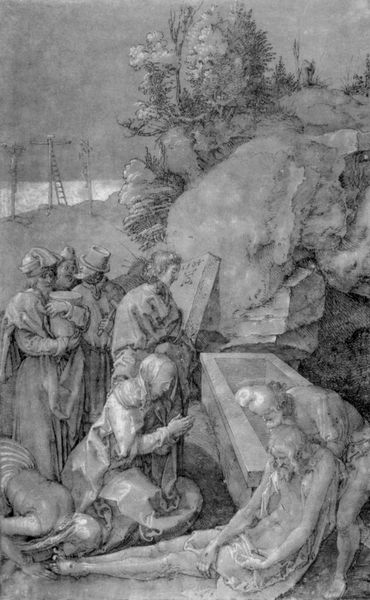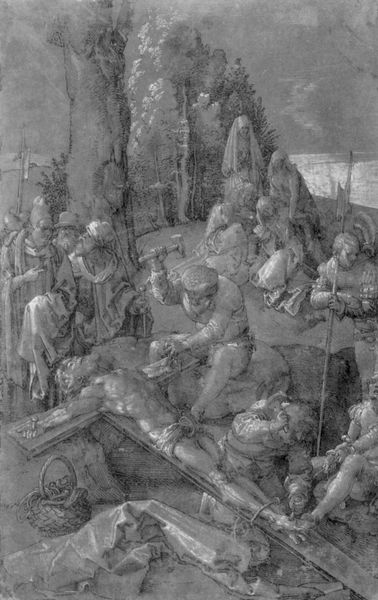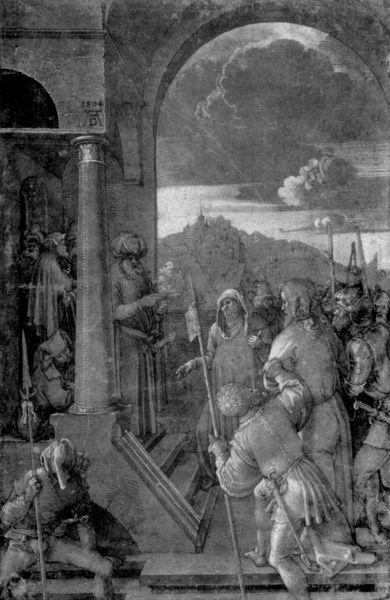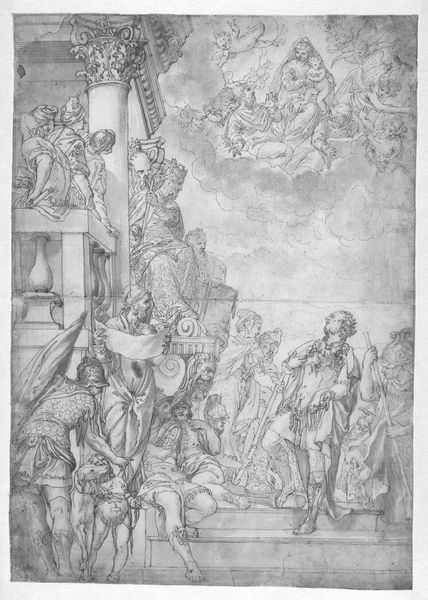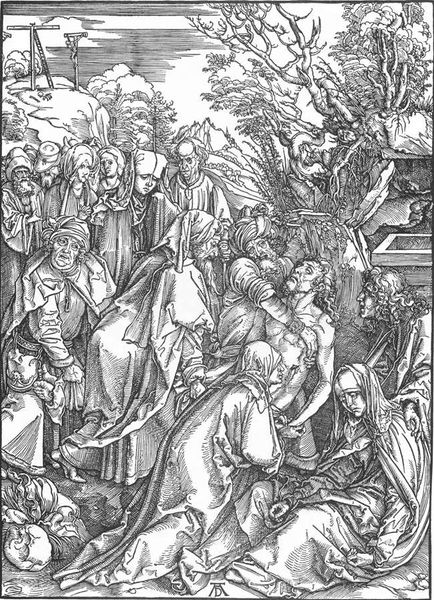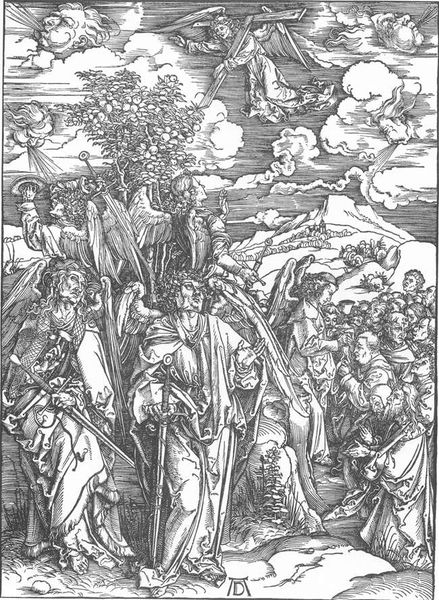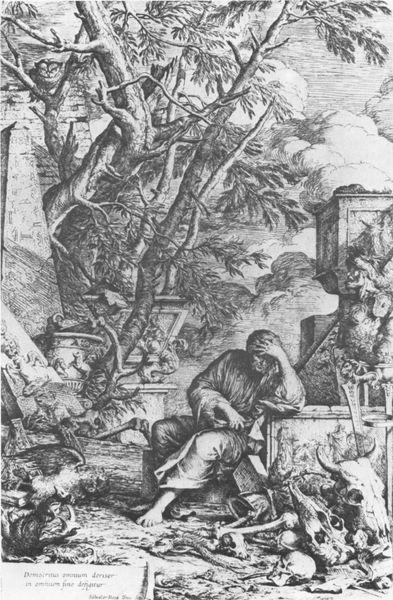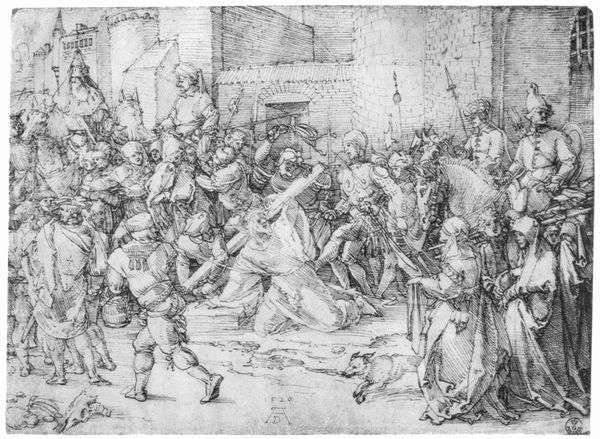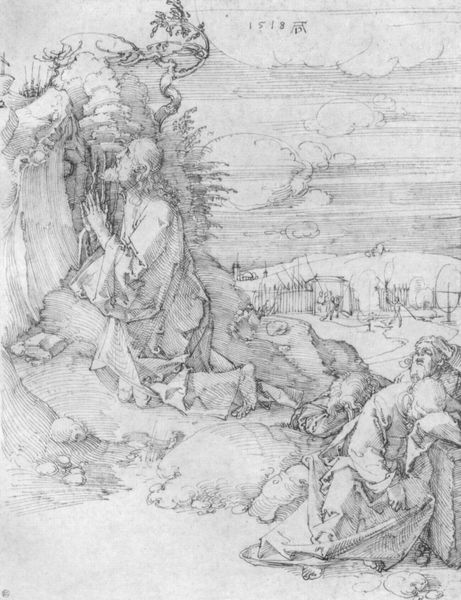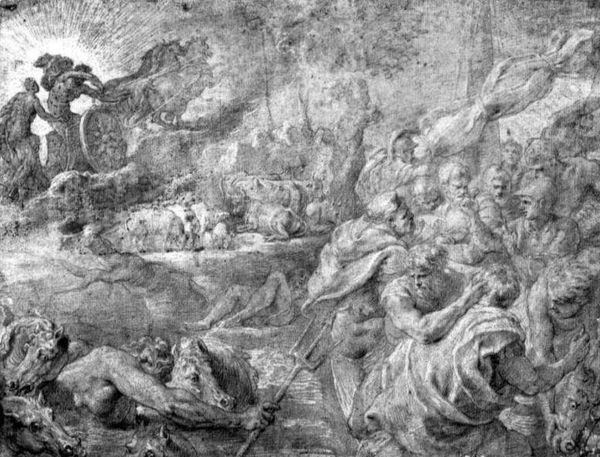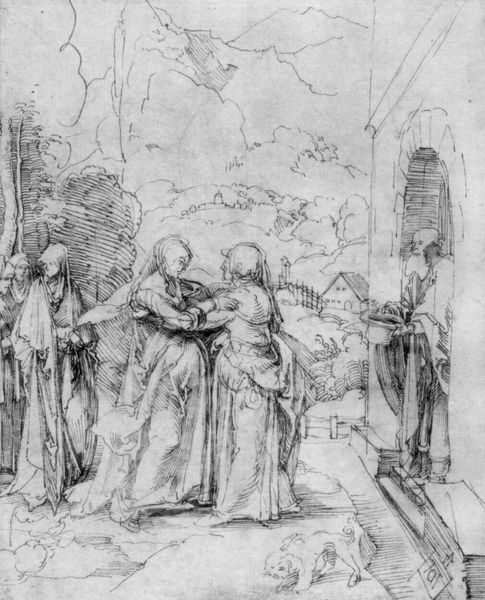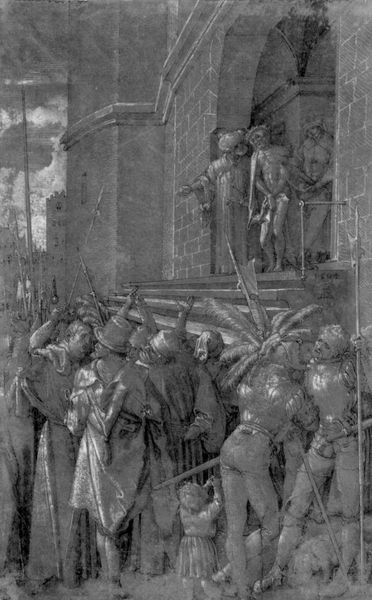
drawing, charcoal
#
portrait
#
drawing
#
black and white format
#
charcoal drawing
#
monochrome colours
#
figuration
#
form
#
11_renaissance
#
charcoal art
#
black and white
#
christianity
#
charcoal
#
history-painting
#
northern-renaissance
#
monochrome
#
charcoal
#
monochrome
#
christ
Copyright: Public domain
Editor: This is a drawing of "Christ on the Cross" by Albrecht Durer. The somber tones of charcoal lend it a very solemn feeling. I'm struck by the sheer labor that must have gone into rendering all these figures and details in charcoal. What do you see in this piece? Curator: I notice immediately the stark contrast between the supposed divine subject and the visibly laborious artistic process. Charcoal itself, as a product of burned organic material, brings to mind transformation and even destruction. It’s cheap, it’s readily available. What does it mean to depict the ultimate sacrifice with such humble, even mundane, materials? Does it elevate charcoal, or does it challenge our expectations of how sacred events should be portrayed? Editor: That’s an interesting perspective. I hadn't considered the socio-economic aspect of charcoal itself. So, using a ‘low’ material elevates the subject matter or brings it down to earth? Curator: It could be both, simultaneously! Consider the consumption of art during Durer’s time. Who was this piece *for*? Was it intended for a wealthy patron accustomed to costly materials like gold leaf and vibrant pigments, or for a wider audience? The very *making* of art is a social act. What kind of workshop did Durer have, what assistants helped with its creation, how did its production engage in the economic patterns of the period? Editor: That makes me think about the difference between viewing the drawing as a religious artifact versus understanding it as a commodity. So it is not just a rendering, but a socio-economic product. Curator: Exactly! The “aura” of art so frequently emphasized becomes complicated when you consider its very material existence and conditions of production. We shouldn’t just admire it; we should think about where it came from and how it came to be. Editor: I see what you mean. Looking at it now, I appreciate the materiality itself, understanding how the materials used affect my perception and the art itself. Curator: Indeed! Thinking about the production helps reveal some hidden socio-economical patterns from its time, enriching the work’s overall meaning to us.
Comments
No comments
Be the first to comment and join the conversation on the ultimate creative platform.
